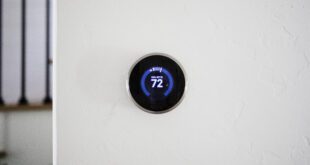
Marc Lopata says his job is to uncover the dark side of microgrids.
And that’s just what the president and principal engineer for Microgrid Solar is doing in a project that combines energy storage and solar energy at Missouri University of Science and Technology (Missouri S&T).
The project is located at the “Solar Village,” which consists of multiple houses built by the university’s students, between 2002 to 2009, for competition in the U.S. Department of Energy’s Solar Decathlon.
Missouri S&T students, faculty and staff, along with members of the university’s microgrid advisory board (Ameren, City Utilities of Springfield, Rolla Municipal Utilities and Electric Power Research Institute), several Missouri manufacturers (Milbank and Ford) and the Army Corps of Engineers, have worked together for two years to design and implement an advanced microgrid testing facility at the village that aims to uncover solutions to common microgrid solar challenges.
While the facility, with its solar installations and energy storage units, has the ability to be completely independent of the grid, the project will also investigate the benefits of a number of on- and off-grid scenarios, he said.
For example, the project will look into when it makes sense to take advantage of time-of-use cost structures–a goal that will likely keep math-loving students busy.
“If the utility has a time-of-use tariff, we might use grid electricity during off-peak and during peak use the solar and battery power,” Lopata explained.
The project will also look at the challenges of microgrids.
“Part of my job is to look at the dark side of projects–what happens when things don’t go right,” he says.
For example, the project will seek to educate firefighters about what to do when there’s a fire at a microgrid facility.
“Firefighters don’t have an understanding of renewable energy systems and how they can affect their firefighting abilities,” says Lopata. “We see problems happening in various places with ordinary rooftop fire arrays. Firefighters don’t understand the risk, and sometimes refuse to respond to a fire where there’s a solar array. Microgrids don’t make that easier. Not only do they have to cut off the electricity, but they don’t know where the electricity sources are,” he explains.
For example, a firefighter might turn the power off in a building by removing the utility meter, but that might not turn off all the electrical systems. There could be storage or fuel cells that provide electricity. Not understanding those possibilities poses a risk to firefighters–a risk they need to understand.
Another microgrid challenge is maintaining reliability. “If you look at a utility coal-fired plant, they have a reliability of 80 percent. On the other hand, a solar array when the sun is shining has 99 percent reliability. It’s a lot more reliable. But when you put extra equipment and batteries and controls, it makes it more complicated,” he said.
As part of the project, a number of companies are testing the reliability of their equipment and refining it, he said. They include the battery manufacturer and a fuel cell manufacturer.
Lopata’s goals of looking at the dark side of microgrids is likely to uncover important information likely to help keep the lights on–at this solar village and elsewhere.
“The research that Missouri S&T and the university’s industry partners do with this versatile testing facility will help to pave the way for significant progress toward energy security and independence,” he said.
About Lisa Cohn
Lisa Cohn is an award-winning writer and author who has covered energy for more than 20 years. She is the host of Energy Energy Efficiency Markets Podcast, which has more than 400,000 subscribers and gains more than 400 new subscribers a day. Her energy articles have appeared in EnergyBiz, Horizon Air Magazine, Natural Home, Windpower Monthly, Mother Earth News, The Oregonian, and other regional and national publications.
 Alternative Energy HQ solar power for homes, wind energy, and bio fuel issues
Alternative Energy HQ solar power for homes, wind energy, and bio fuel issues


 Solar Decathlon Homes Form Missouri Solar Village
Solar Decathlon Homes Form Missouri Solar Village







